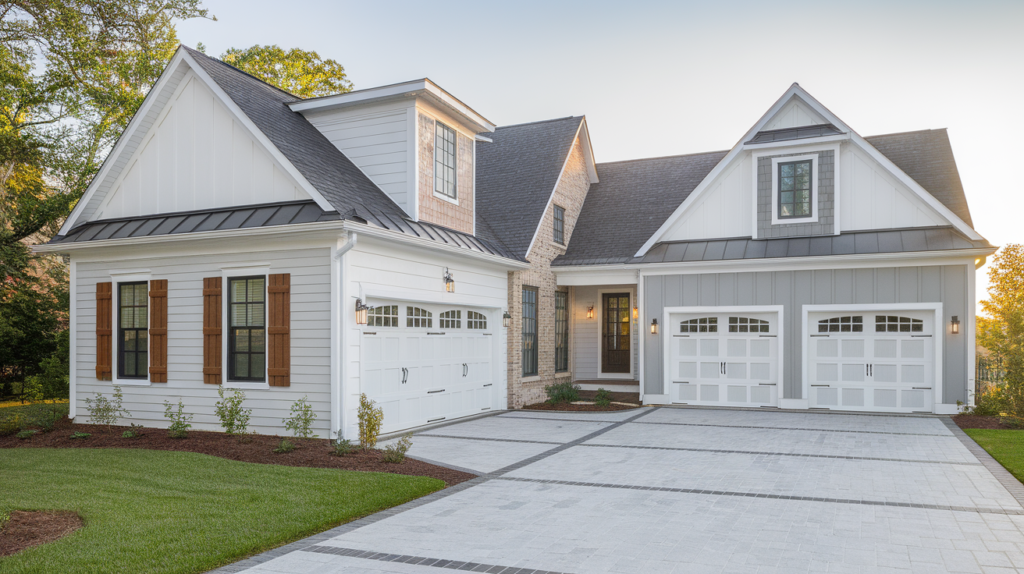I’ve worked with many homeowners to turn plain garages into features that really stand out. In this guide, I’ll show you garage siding ideas that can boost your curb appeal and even raise your home’s value.
You’ll learn which materials are best for different weather, how to pick styles that fit your budget, and ways to match your garage with the rest of your house.
I’ll also share simple upgrades that make a big difference. If you’re starting fresh or want a change, these tips will help you make smart choices that last. Let’s get started!
Why Garage Siding Matters?
Your garage isn’t just for parking your car or storing boxes. It’s a big part of how your home looks from the outside, and it deserves just as much attention as your front door or yard.
A well-sided garage can actually boost your home’s value by up to 4%, which makes it more than just a cosmetic upgrade. The right siding also protects your garage from rain, snow, and strong sun, helping everything inside stay safe and dry.
It can also help control the temperature, keeping the space cooler in summer and warmer in winter. Some siding even helps block out noise from traffic or neighbors.
Plus, modern siding requires little maintenance and lasts a long time. Since your garage can make up nearly 30% of your home’s front view, choosing the right material really matters. It affects both how your home looks and how well it performs.
Top Garage Siding Ideas
1. Vinyl Siding
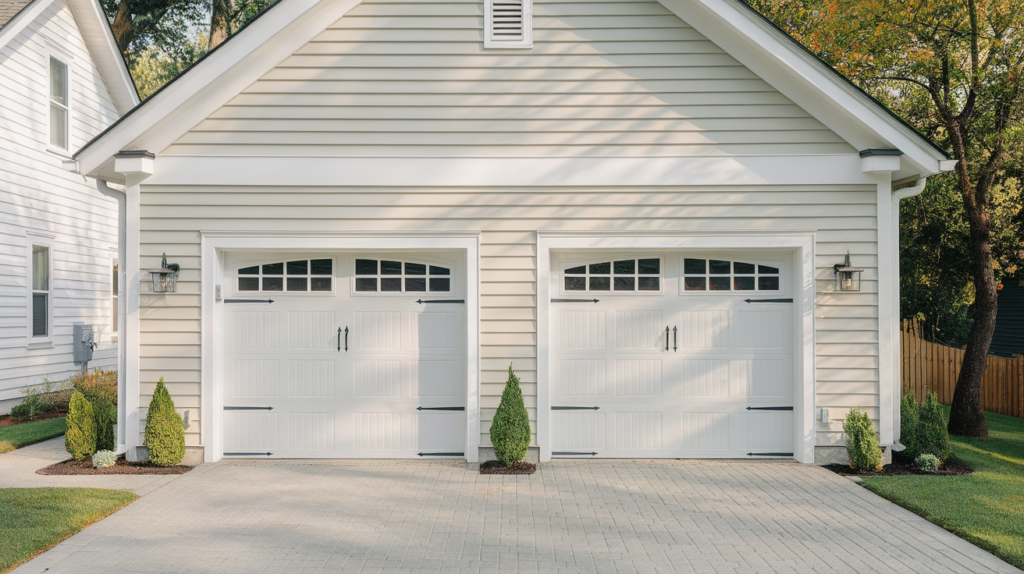
Vinyl siding is one of the most popular choices for garage exteriors, and it’s easy to see why. It’s budget-friendly, easy to install, and comes in lots of colors and textures.
Today’s vinyl holds up better than older types, resisting cracks, fading, and warping in most climates. Some styles even look like wood or stone. It’s great for moderate weather but may crack in extreme cold. A once-a-year rinse with a pressure washer keeps it clean.
At about $3–7 per square foot installed, vinyl gives you a clean look without costing a lot, making it ideal for most homeowners.
2. Fiber Cement Siding
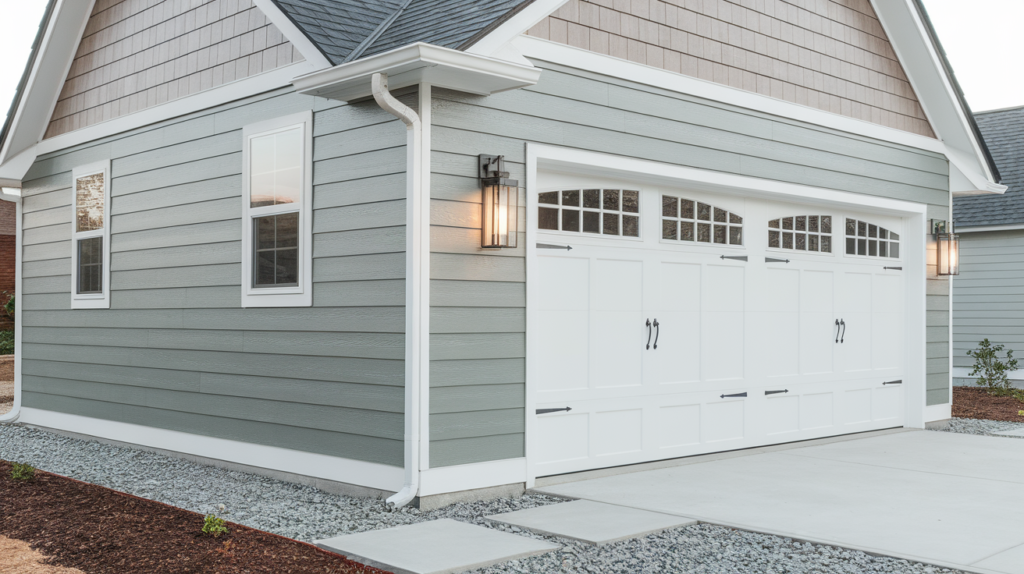
Fiber cement siding is tough and long-lasting. It is made from a mix of cement, sand, and fibers. It withstands heat, bugs, rot, and even strong winds, so it’s a solid choice for nearly any climate.
It looks like wood, stucco, or brick, and you can paint it any color. Though it costs more than vinyl—around $5–11 per square foot—it lasts much longer, often backed by warranties of up to 50 years.
It won’t warp or buckle like some materials, and it needs little upkeep. If you want something durable and stylish, this option is worth the investment.
3. Wood Siding
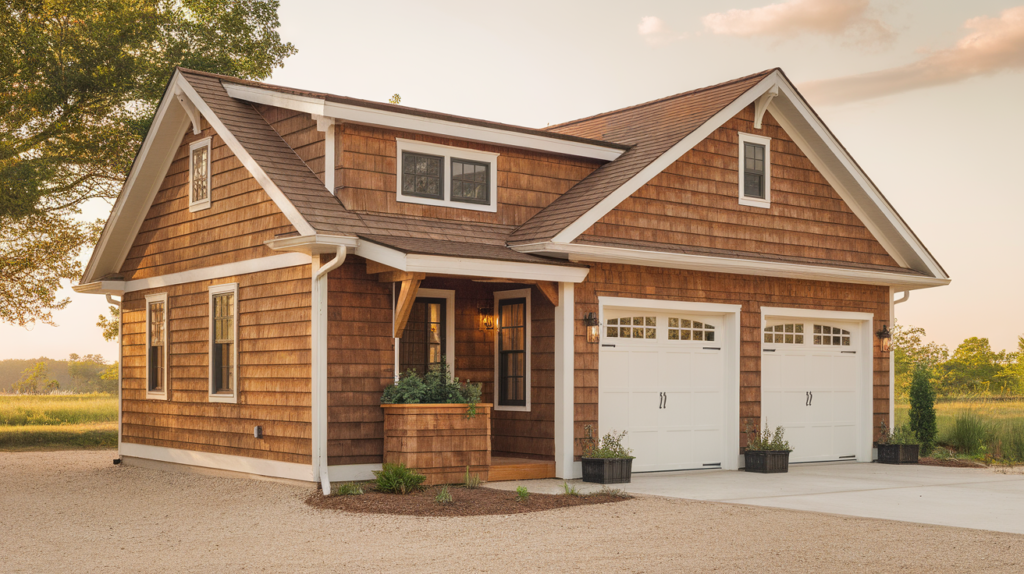
Wood siding offers a classic, natural look that many people love for its beauty and warmth. Popular choices include cedar, pine, and redwood, which can be styled in different ways, such as clapboard, board-and-batten, or shingles.
But real wood requires more care—it needs staining or painting every few years to prevent rot and damage. Prices range from $6 to $12 per square foot, depending on the type.
While wood costs more and takes work to maintain, it’s a favorite for its beauty and eco-friendly appeal. If you’re willing to care for it, wood siding adds a timeless touch to any garage.
4. Metal Siding
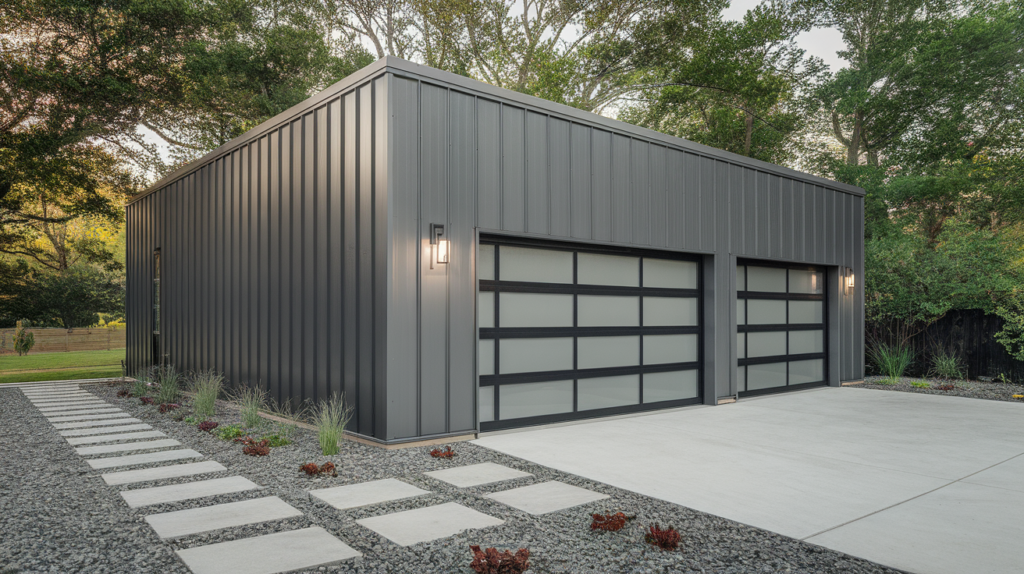
Modern metal siding comes in sleek styles, such as aluminum, steel, or even copper, and it looks much better than the old corrugated types.
It’s super durable—it won’t rot, warp, or burn, and it stands up to harsh weather really well. You need to hose it down now and then to keep it clean. Steel or aluminum costs about $4–8 per square foot, while copper costs more but adds a cool patina over time.
Metal works well with modern or mixed-style homes and, thanks to its heat resistance, is also great for garages in fire-risk areas.
5. Brick Veneer
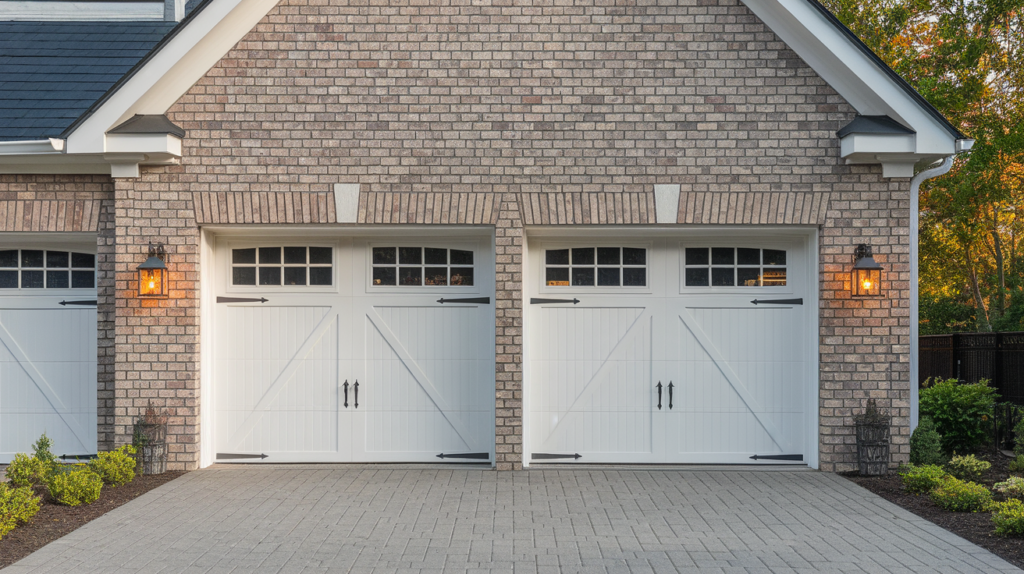
Brick veneer gives your garage a strong, timeless look that suggests quality and stability. It’s not full-thickness brick but rather a thinner layer that’s attached to the frame, so you get the same great appearance without the high cost of real masonry.
It requires very little maintenance, won’t rot, fade, or need painting, and it’s fire-resistant, too. Prices range from $9 to $17 per square foot installed.
Brick veneer adds value to your home and can last for generations, making it a smart long-term investment if you want both beauty and durability in your garage siding.
6. Stone Veneer
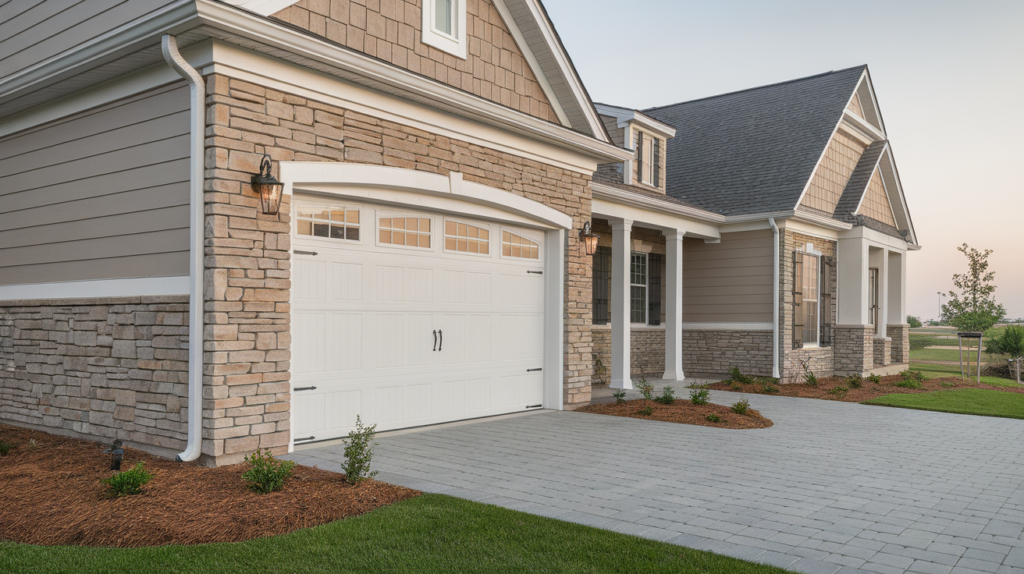
Stone veneer gives the look of real stone but at a lower cost and without the need for a full stone wall.
It’s available in styles like fieldstone, limestone, or granite, each offering its texture and beauty. It doesn’t fade, rot, or attract pests, and it’s great at insulating against both sound and weather.
Prices run $12–25 per square foot installed, but you can save by using manufactured stone, which looks real but costs about 25% less. Stone veneer is a beautiful and smart option for giving your garage a luxury feel and lasting protection.
7. Board-and-Batten Siding
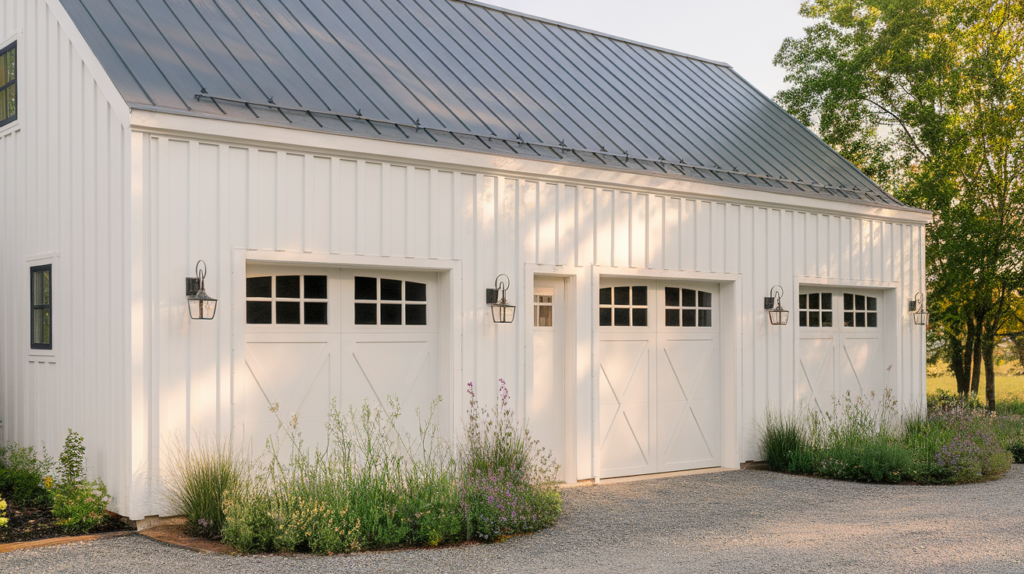
Board-and-batten siding gives your garage a country or farmhouse feel. Vertical boards and narrow strips (battens) cover the seams.
It adds height and character to your space. Depending on your budget and maintenance needs, you can get this look using wood, fiber cement, vinyl, or engineered wood. The style works well on smaller garages, making them seem taller and more interesting.
Depending on the material, wood costs around $4–12 per square foot. Wood requires more upkeep, but the look is worth it for many people. This option is a winner for a simple way to add beauty and depth.
8. Stucco Finish
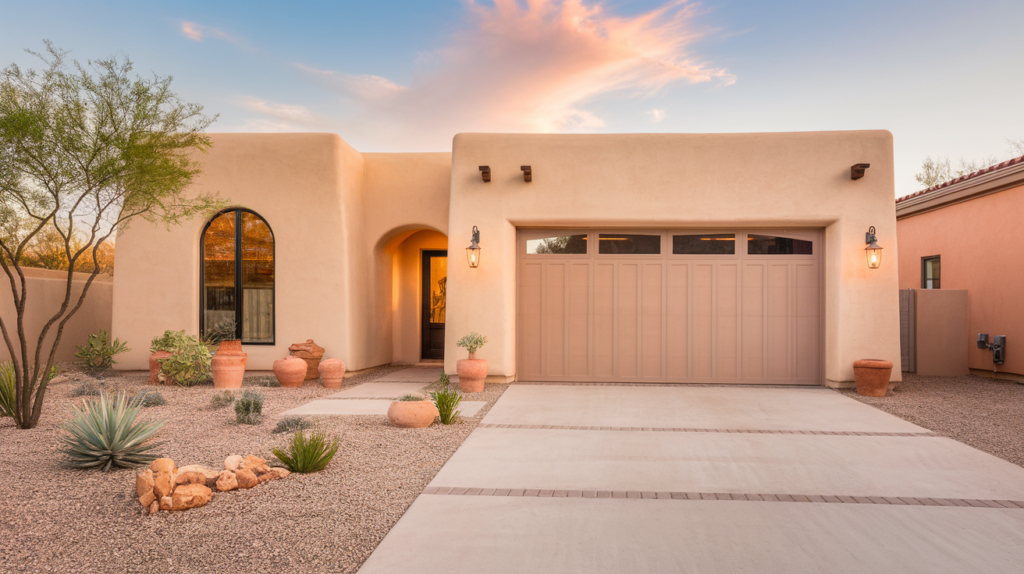
Stucco offers a smooth, clean surface that works really well with Mediterranean, Spanish, or Southwestern-style homes. It’s made from layers of cement, lime, and sand, and once it cures, it becomes tough, fire-resistant, and pest-proof.
You can choose a traditional mix or a synthetic version (called EIFS) that includes insulation. Regular stucco costs $6 to $9 per square foot, while EIFS can cost up to $12.
With proper care, stucco lasts 50–80 years. It usually needs washing and the occasional repaint. For a clean and lasting finish with a soft texture, stucco is a great pick.
9. Engineered Wood Siding
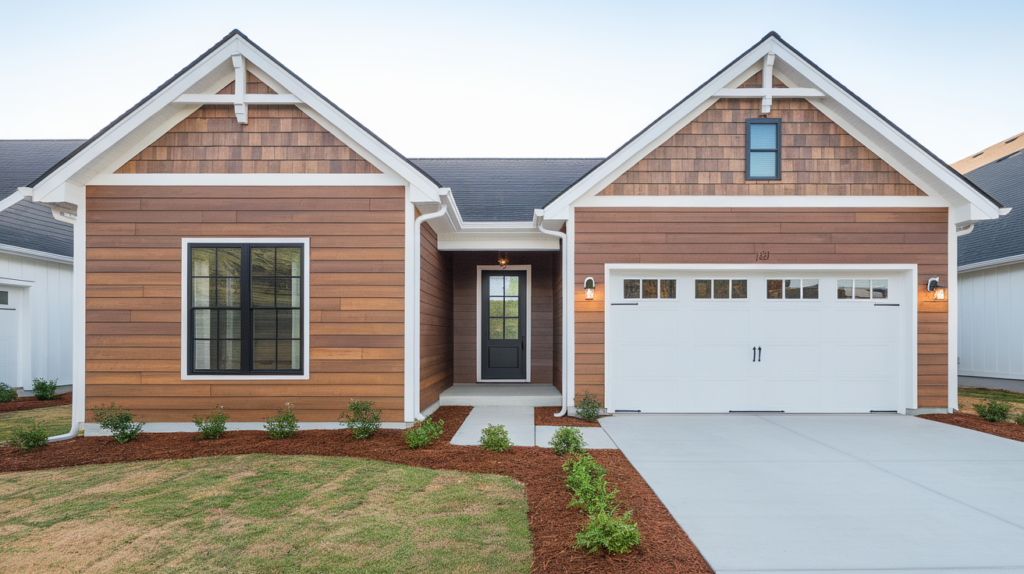
Engineered wood siding gives you the look of real wood but without many of the downsides. It’s made from wood fibers and resin, which are pressed together to create strong, weather-resistant panels.
It holds up better to moisture and bugs than regular wood and usually comes pre-primed for painting. You’ll only need to repaint every 7–10 years, and many brands offer 30-year warranties. It’s also a more eco-friendly option because it uses wood waste and fast-growing trees.
At about $4–8 per square foot installed, it offers a great balance of price, durability, and natural appearance for your garage.
10. Shiplap Siding
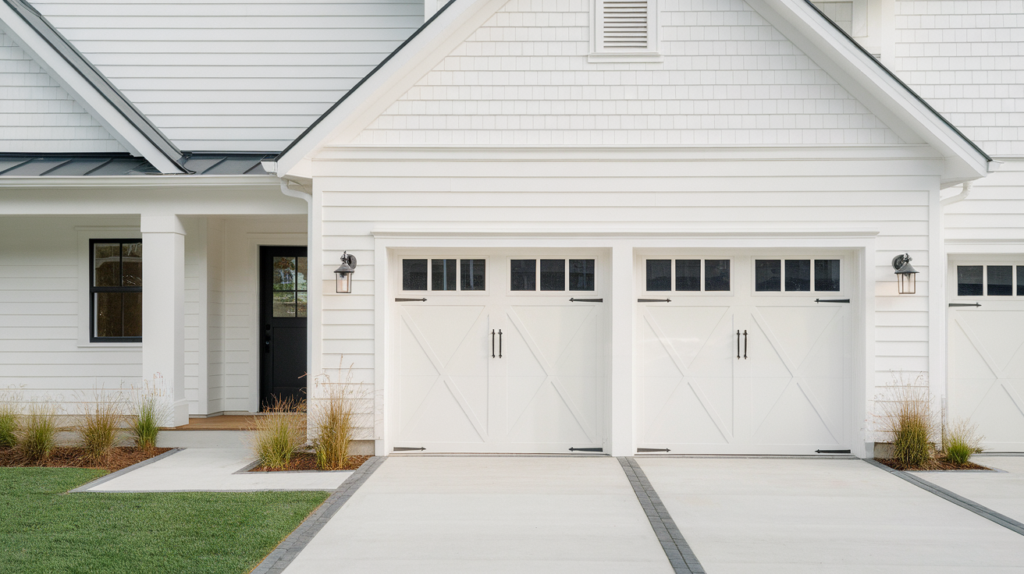
Shiplap siding features flat boards that overlap slightly to form subtle shadow lines, giving a clean, modern look. It’s a favorite for farmhouse or coastal homes and fits well with many transitional styles, too.
Unlike angled clapboard siding, shiplap boards lie flat, which gives your garage a smooth finish. It’s available in real wood, engineered wood, fiber cement, and even PVC, so you can pick the version that fits your needs.
Shiplap siding costs $4–10 per square foot installed. It is a great choice if you want a neat, stylish look with lots of design options.
11. Mixed Materials
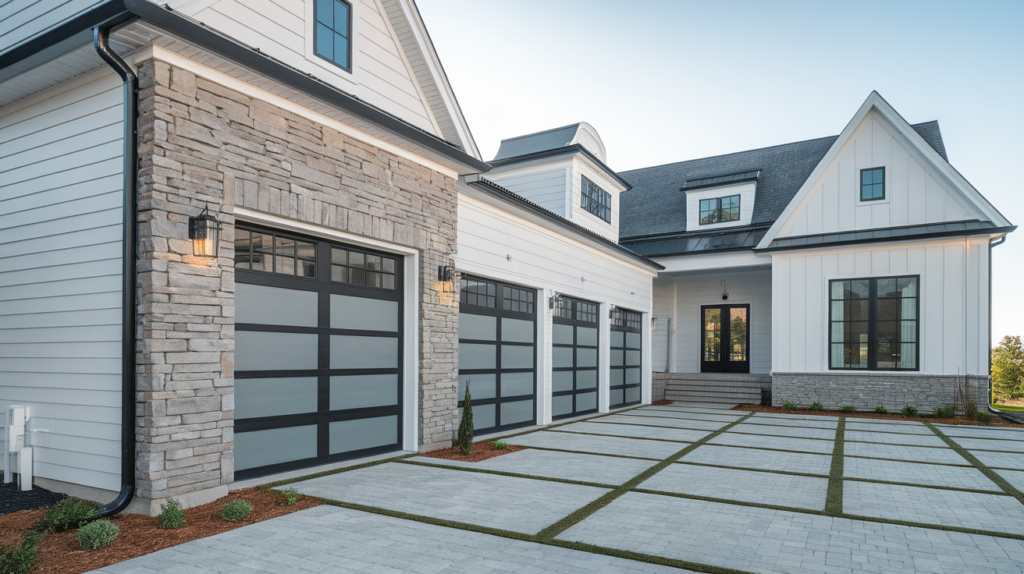
Using mixed materials lets you design a garage that’s truly eye-catching and full of personality. For example, you can mix stone or brick with siding above, or add board-and-batten or metal panels as accents.
This breaks up large walls and adds contrast, giving your garage depth and style. It’s a great way to use high-end materials in small areas, so you save money without losing impact.
The cost depends on the materials you choose, but the final look can be well worth it. Work with a designer or contractor to ensure everything blends smoothly for the best results.
Tips for Choosing the Right Siding
Choosing the right garage siding isn’t just about picking what looks nice—it’s also about finding what works best for your home and lifestyle. First, make sure the siding matches or complements your home’s style so it blends in smoothly instead of standing out awkwardly.
The material you choose should also be right for your local weather. For example, vinyl might crack in freezing temperatures, and wood might not hold up well in very humid places.
Think honestly about how much time you want to spend on upkeep. While low-maintenance options might cost more at first, they can save you time and effort over the years.
Don’t just look at the sticker price—consider the material’s lifespan and the cost of maintenance or replacement.
Before you commit, check your neighborhood or HOA rules, and always get at least three quotes for installation. If you can, see the material in a real home, not just a sample, so you know exactly what you’re getting. Taking your time now will help you avoid regrets later.
Conclusion
Your garage deserves just as much attention as any other part of your home, even if it’s often overlooked during upgrades. Choosing the right siding can turn it from something plain into a feature that actually adds beauty and value to your whole property.
If you choose vinyl’s the low-cost, low-maintenance benefit, brick is the classic and sturdy, or metal is the sleek and modern, each siding type says something about your style and what you care most about. It’s not just about looks—it’s about function, too.
When making your decision, think about what matters most to you. Maybe you care about price, or maybe long-lasting quality or easy care are more important.
The right siding choice will fit your needs and make you feel good every time you pull into the driveway.
I hope these ideas gave you a new way to think about your garage. Which style are you leaning toward? Drop your thoughts or questions in the comments—I’d love to hear what you’re planning next!

